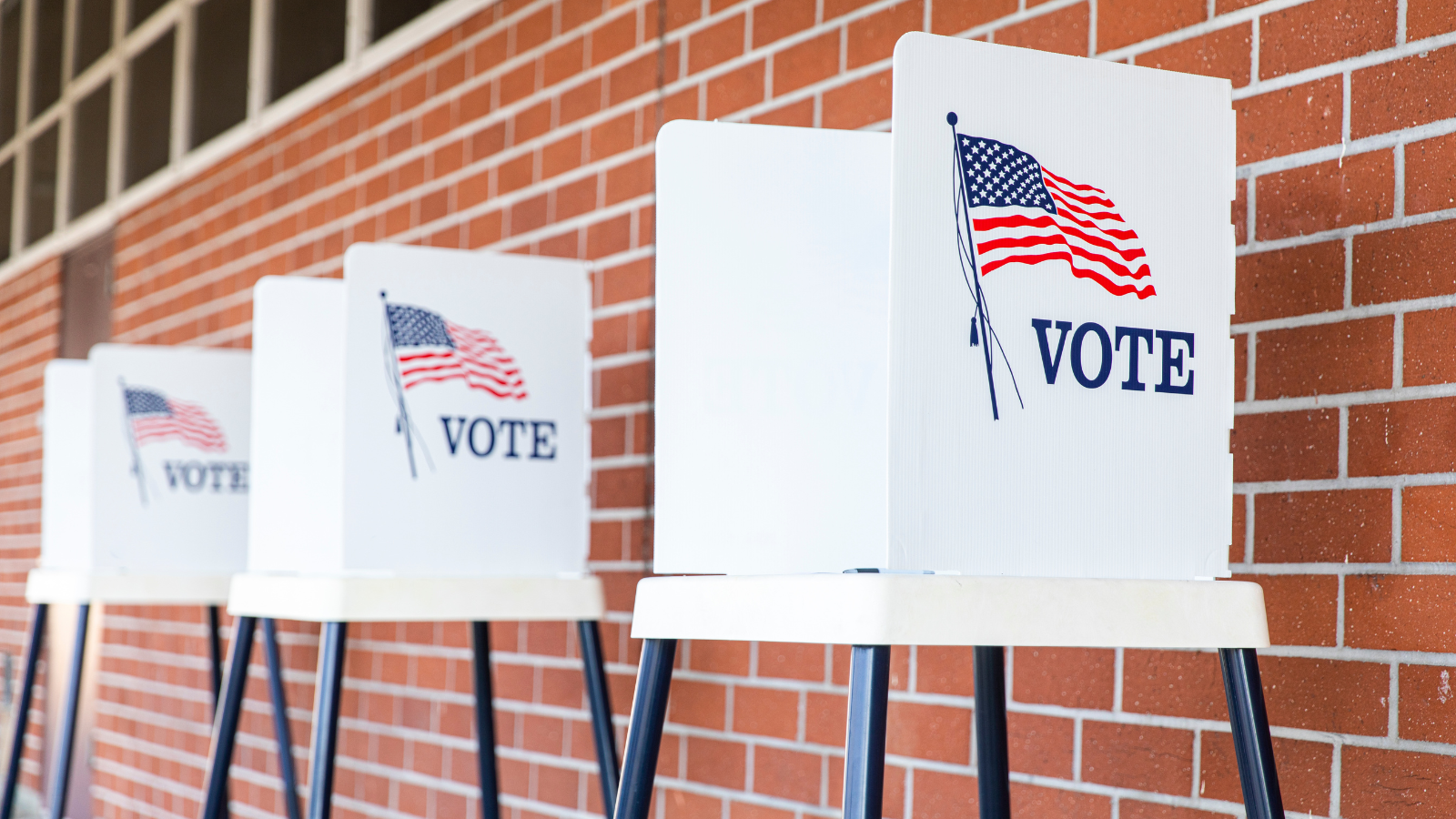
By Valerie Newberg
Please note that this article is based on projected results and may change with certified election results.
Changes to legislative and executive power in the states were on the ballot this November. In this year’s state elections, voters considered issues like the power to convene a special legislative session, the state legislative veto and the creation of new executive offices. This article analyzes the results of these ballot measures in Arkansas, Arizona, Idaho, Kansas and Kentucky.
Arkansas, Idaho and Kentucky considered options for calling a special legislative session.
Kentucky voters decided against a constitutional amendment addressing legislative power with 54% of voters selecting “no”[1]. Constitutional Amendment 1 would have allowed the President of the Senate and Speaker of the House to convene the legislature by a Joint Proclamation for up to 12 days a year and allowed each chamber to extend the end date for the legislative session by a three-fifths vote.[2] With the failure of this measure, only the Governor can call a special legislative session in Kentucky.
In Arkansas, 61% of voters rejected a similar ballot measure for Issue 1.[3] This amendment would have allowed either a two-thirds majority vote in both chambers or a joint proclamation by House and Senate leadership to convene a special session. Currently, only the Governor of Arkansas has that power.
Kentucky and Arkansas are two of 13 states that give the governor sole power over calling a legislative session. Illinois, Ohio and Delaware are the only three states that do not require a legislative vote or Governor’s authority to convene a special legislative session.[4]
With 52% of Idaho voters selecting “yes” on Constitutional Amendment SJR 102, the state now allows Senate and House leadership to convene a special legislative session if they receive a joint proclamation from three-fifths of lawmakers in each chamber.[5] Idaho joins 17 other states where a supermajority is required to convene a special legislative session.
Arizona voters decided to create the position of lieutenant governor.
Proposition 131 is a legislatively referred constitutional amendment that establishes the office of Lieutenant Governor who would run for election on a joint ticket with the gubernatorial candidate. Voters in Arizona supported this ballot measure with 55% voting “yes”. Before this ballot measure was passed, the Arizona constitution stipulated that if the office of the Governor becomes vacant, the Secretary of State should succeed, but the passage of this amendment transferred that power to the Lieutenant Governor.[6]
With this amendment, Arizona joins 45 states who have an elected lieutenant governor position.[7]
Kansas voters rejected the state legislative veto.
Kansas Constitutional Amendment 1, the Legislative Veto or Suspension of Executive Agency Regulations Amendment, was narrowly rejected by voters. Constitutional Amendment 1 authorized the legislature to veto or suspend rules or regulations adopted by executive agencies via a simple majority vote. With a close finish, 50.5% of voters selected to reject this amendment.
From 1939 through 1984, Kansas lawmakers could rewrite or veto any regulation adopted by an administrative agency. In 1984, the Kansas Supreme Court ruled in Stephan v Kansas House of Representatives[8] that this legislative veto violated the constitutional commitment to separation of powers. Before the election, Kansas legislators could only revise or reject administrative procedures by passing a bill that the governor signs into law, but a joint committee could review regulations and make recommendations. Passage of Constitutional Amendment 1 would have expanded legislators’ power and limited the ability of state agencies to unilaterally implement rules that have the effect of law.
Since 1976, Idaho, Iowa and Nevada have passed ballot measures expanding the legislative veto.[9] If Constitutional Initiative 1 was passed, Kansas would have joined at least six others- Arkansas, Connecticut, Idaho, Iowa, New Jersey and Nevada– in allowing legislators to veto executive actions.[10]
CSG will continue to provide initial results on key topics as well as more in-depth analysis in the days following the election. Find those articles on Twitter (@CSGovts) and at csg.org/state-talk.
[1] https://vrsws.sos.ky.gov/liveresults/
[2] https://apps.legislature.ky.gov/law/acts/21RS/documents/0027.pdf
[3] https://ballotpedia.org/Arkansas_Issue_1,_Legislative_Authority_to_Call_a_Special_Session_Amendment_(2022)
[4] https://ballotpedia.org/Kentucky_Constitutional_Amendment_1,_Changes_to_Legislative_Session_End_Dates_and_Special_Sessions_Measure_(2022)#Convening_special_state_legislative_sessions
[5] https://ballotpedia.org/Idaho_Constitutional_Amendment_SJR_102,_Legislative_Authority_to_Call_a_Special_Session_Amendment_(2022)
[6] https://azsos.gov/sites/default/files/for_scr1024_proposition_131_lieutenant_governor_joint_ticket.pdf
[7] https://ballotpedia.org/Arizona_Proposition_131,_Create_Office_of_Lieutenant_Governor_Amendment_(2022)
[8] https://law.justia.com/cases/kansas/supreme-court/1984/56-880-1.html
[9] Https://ballotpedia.org/Kansas_Constitutional_Amendment_1,_Legislative_Veto_or_Suspension_of_Executive_ Agency_Regulations_Amendment_(2022)
[10] https://apnews.com/article/2022-midterm-elections-health-legislature-state-governments-constitutions-60f6103f666d886be18917bdd32bba82


